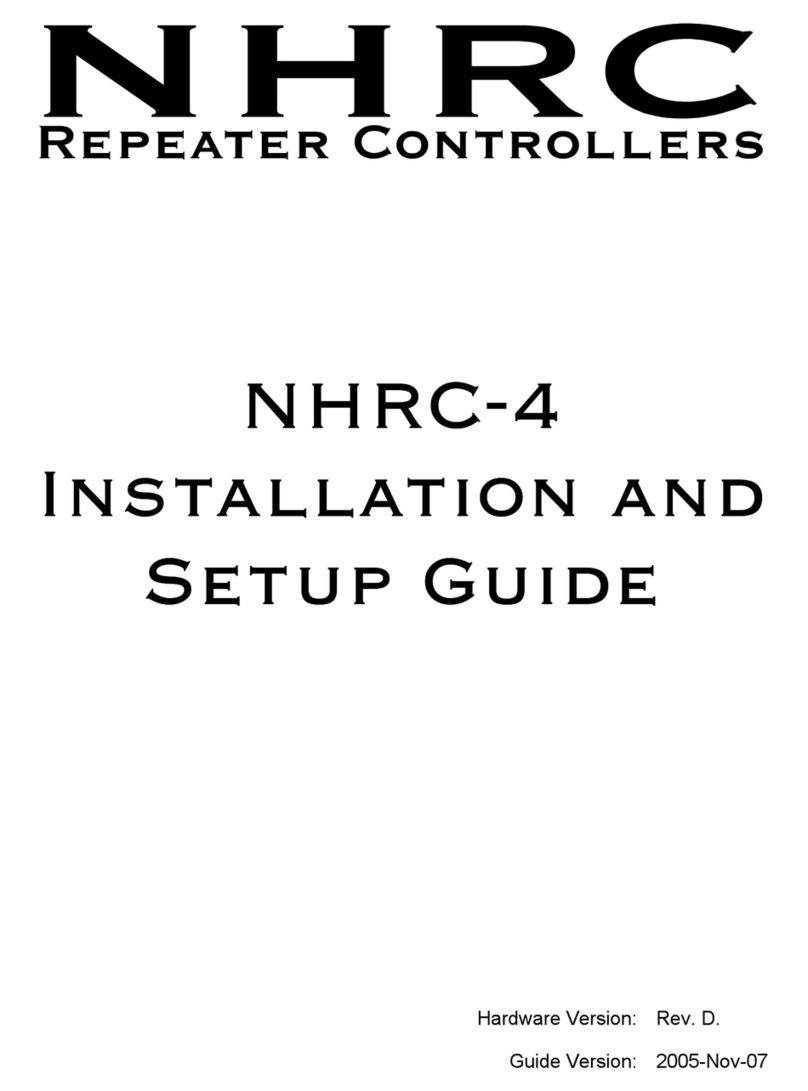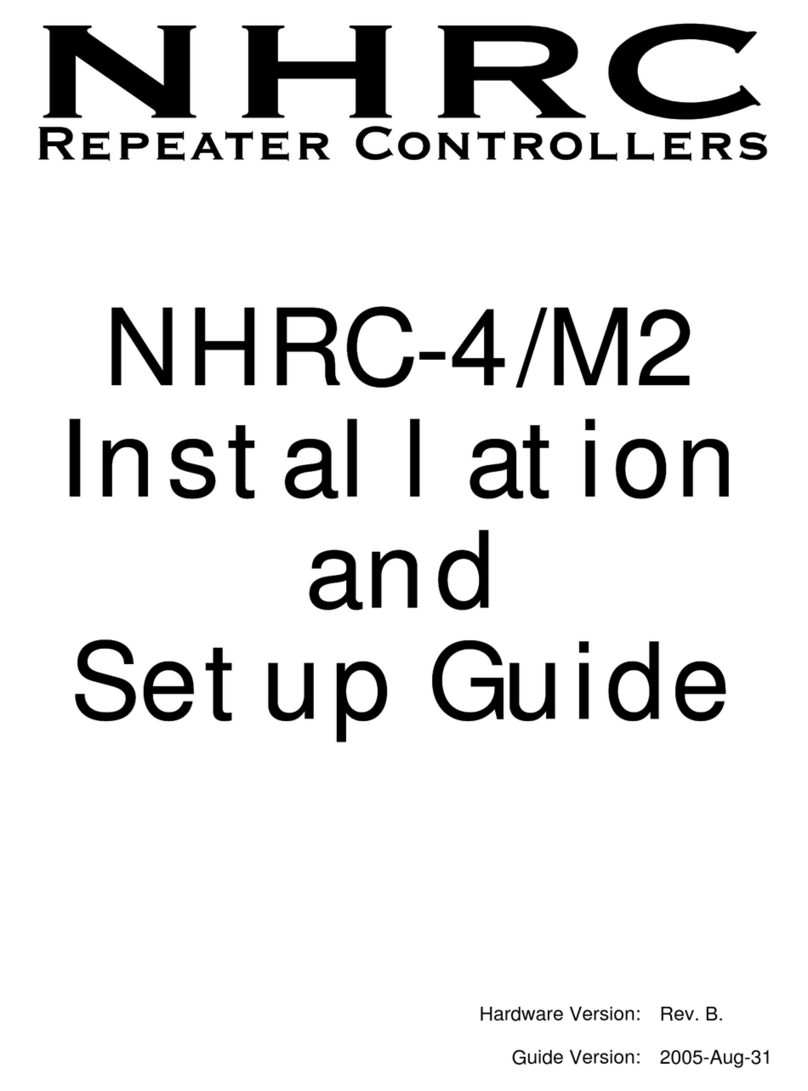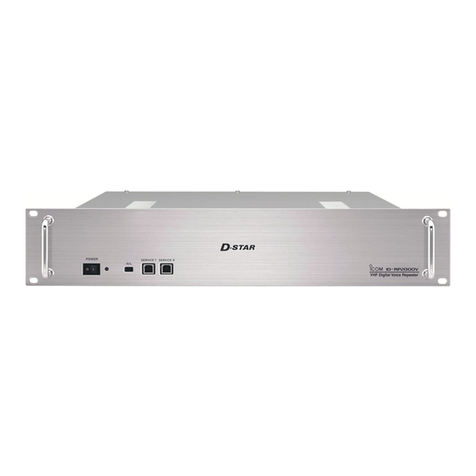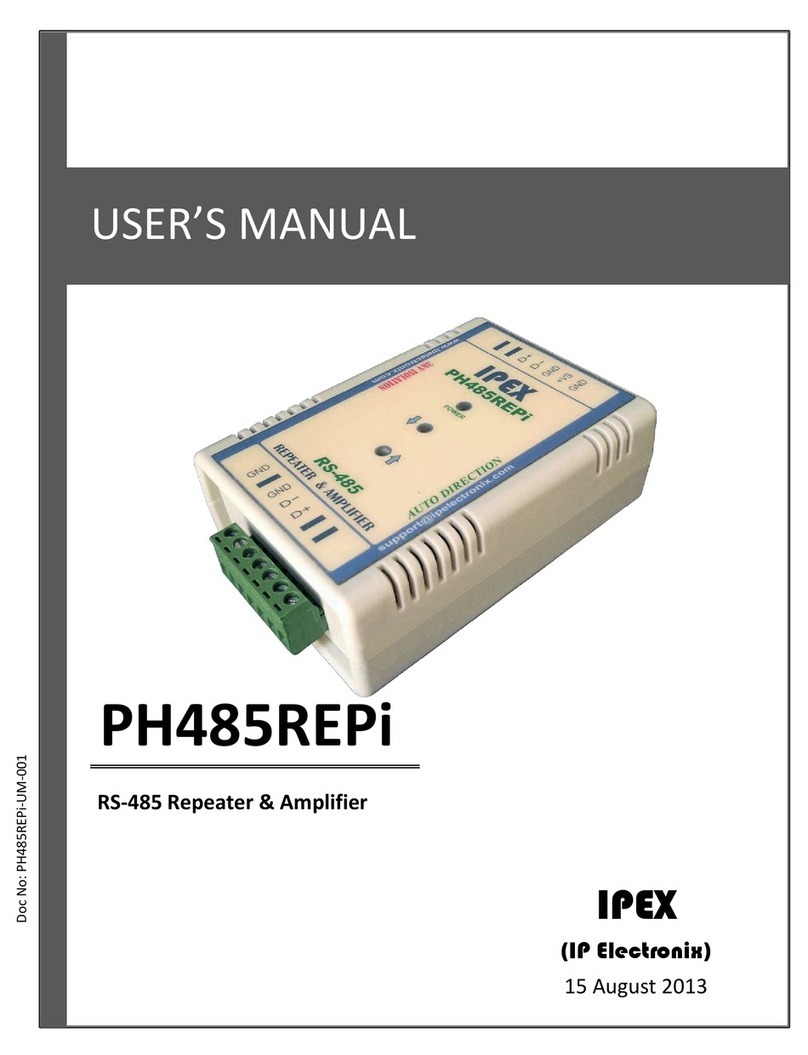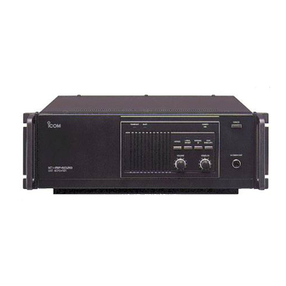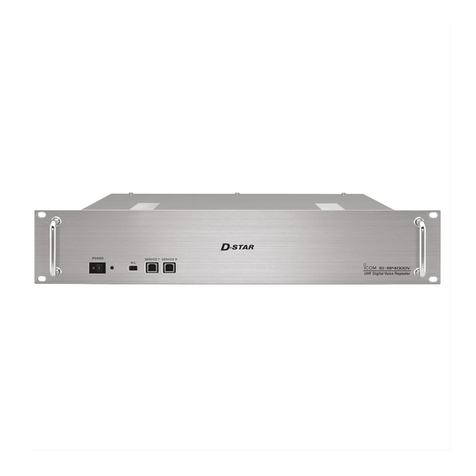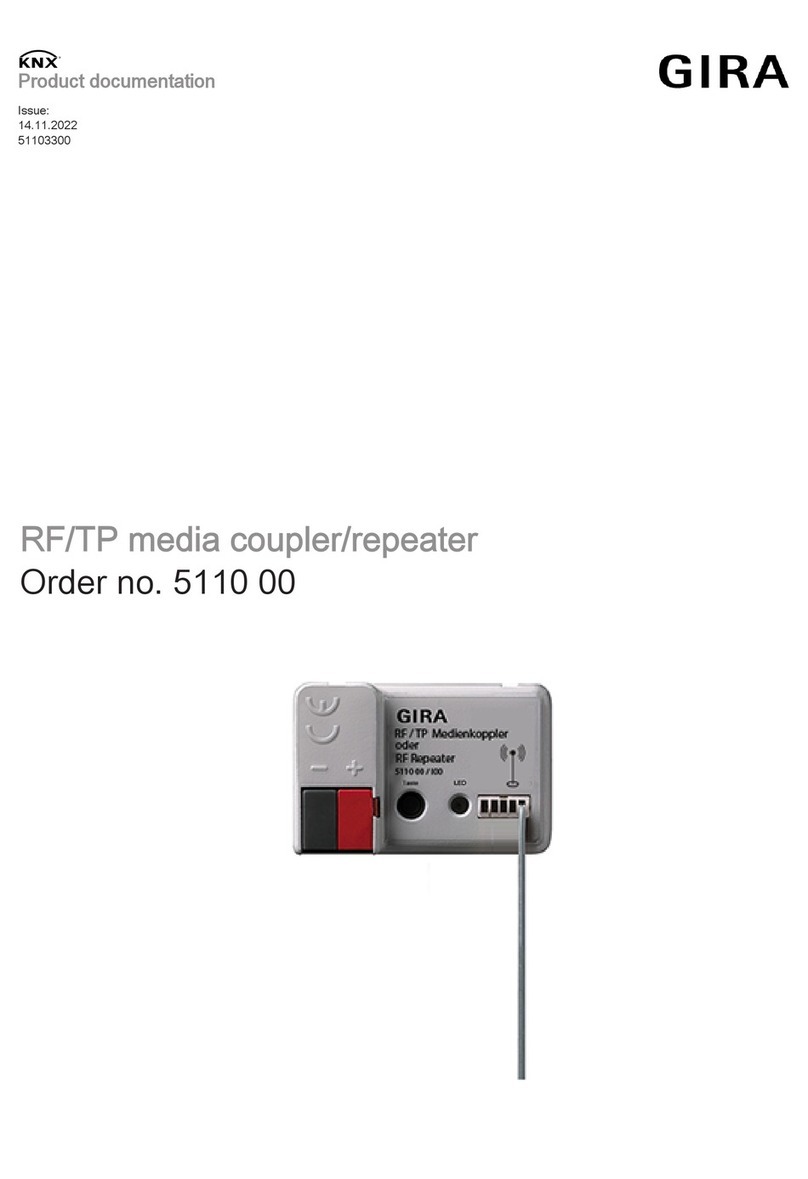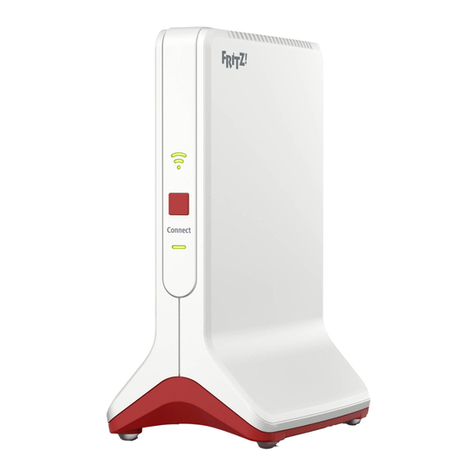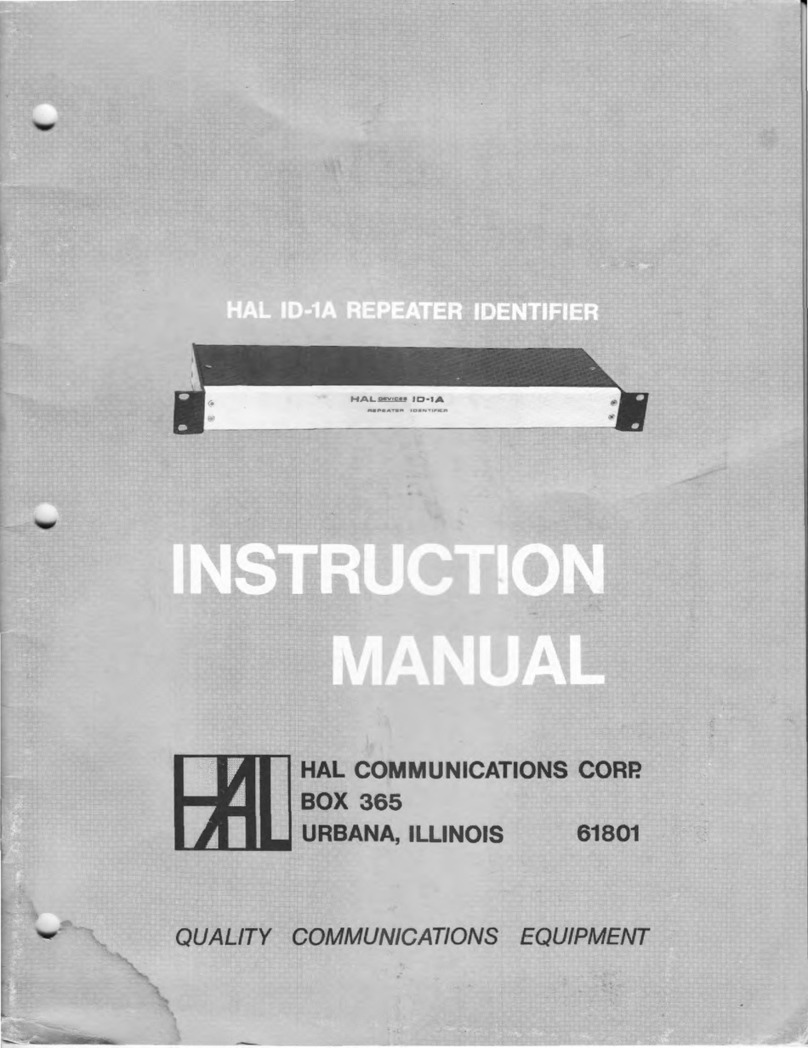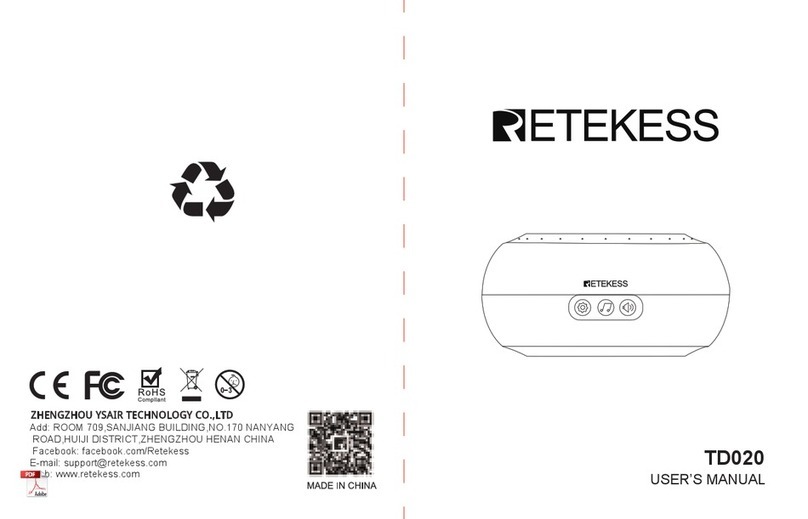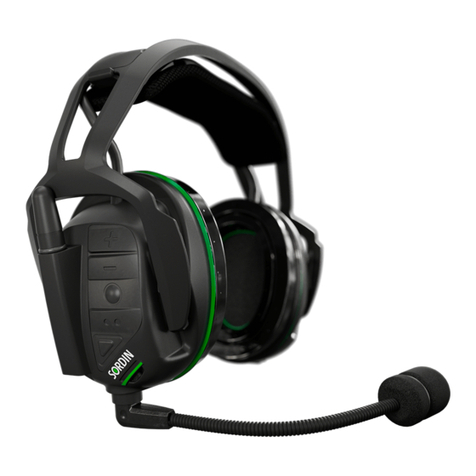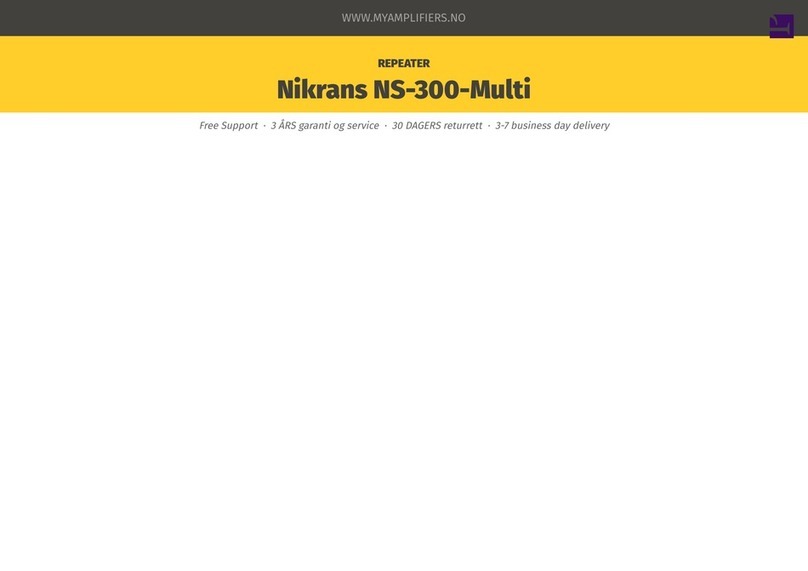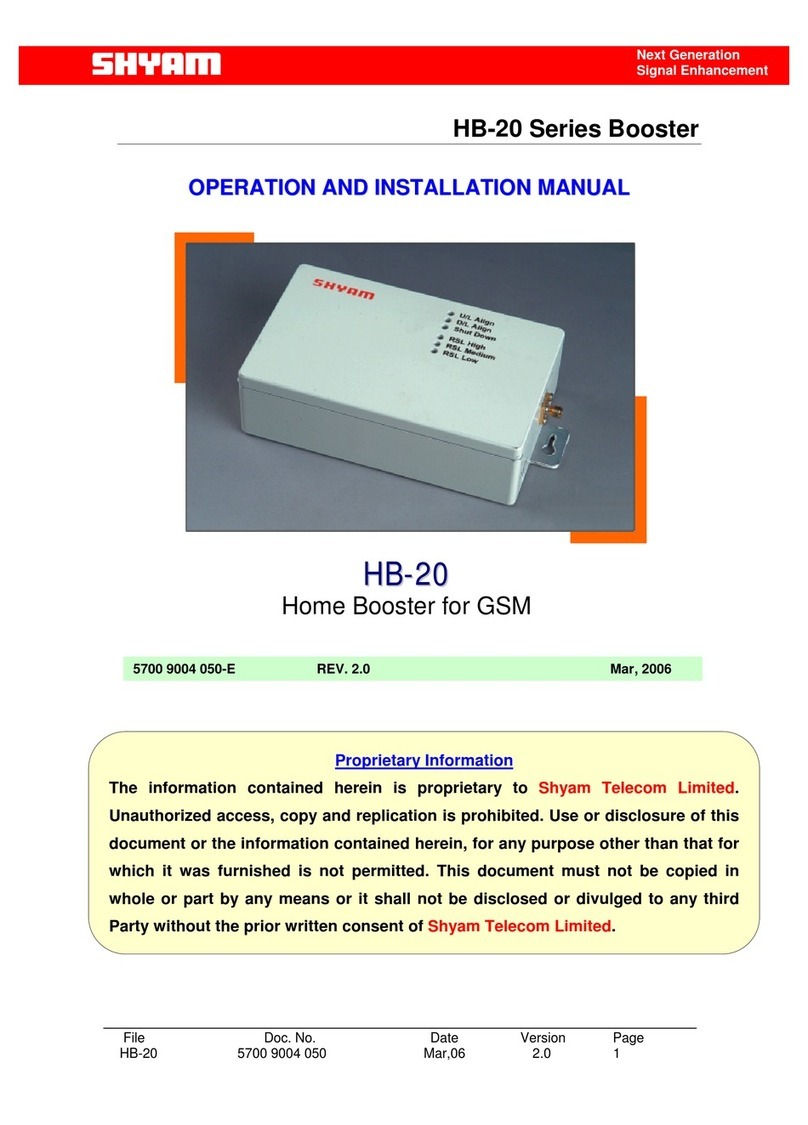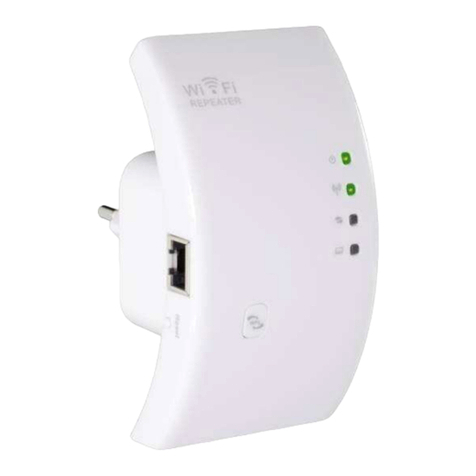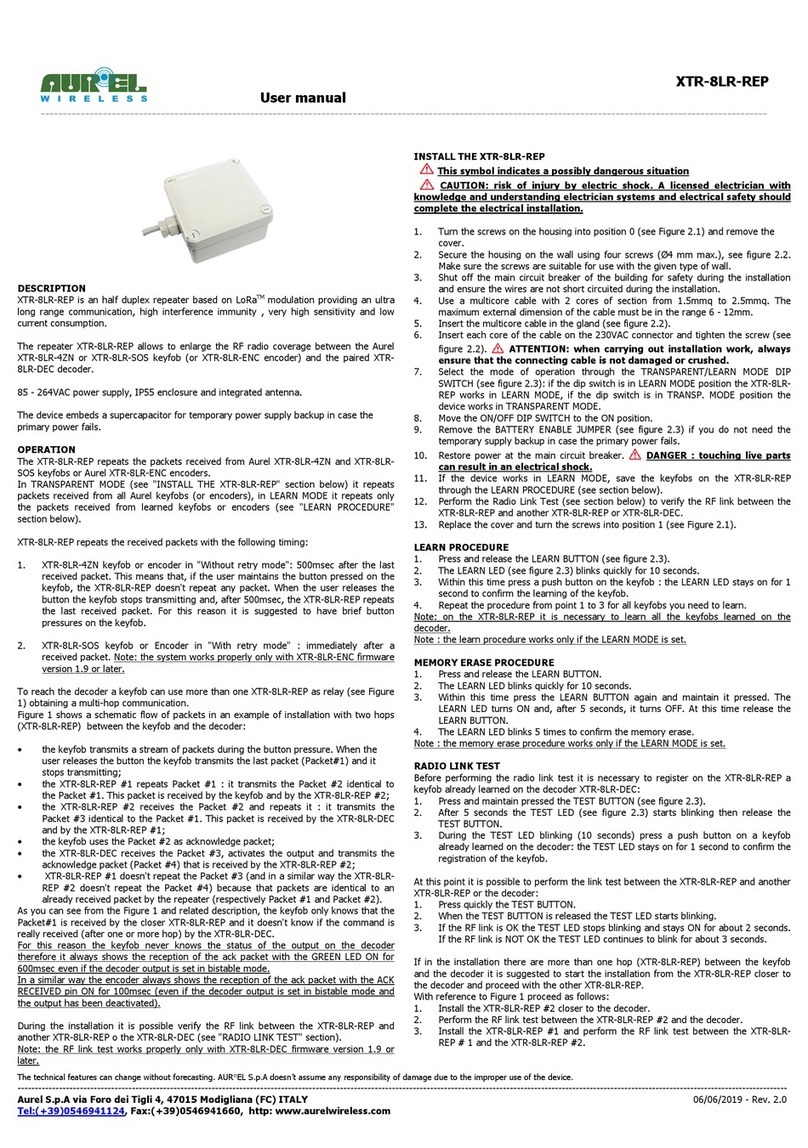NHRC 3+ User manual

NHRC-3+
User Guide
Software Version: 1.1
User Guide Version: 2003-Sep-16

Copyright Notice
Copyright 2001, 2002, 2003 by NHRC LLC
This document contains proprietary information which is the confidential property of
NHRC LLC.
No part of this document may be used or reproduced, by any means, for any purpose,
without the expressed written consent of NHRC LLC.
No part of this document should be considered to be specifications for the proper or
correct operation of the NHRC-3+ Repeater Controller. In no way will NHRC LLC be
liable for direct or indirect damages to the controller or attached equipment.
Printed in the U.S.A.

Thank You!
Thank you for purchasing the NHRC-3+ Repeater Controller. This controller has been
designed using the very latest state-of-the-art technology. Please review this manual
carefully before putting your controller into operation.
This manual represents a very large documentation effort. Your comments are
important to us. If you find an error or find any passages that are not clearly
understandable, we would like to hear about it. Please send your comments to
Support for the controller is available by email or telephone. Please direct software-
promptly.
Questions of a more urgent nature can be answered by telephone support. Telephone
support is available Monday through Friday, from 6 PM until 10 PM, Eastern time.


Table of Contents
Copyright 2001, 2002, 2003, NHRC LLC. All Rights Reserved. Page i
1. INTRODUCTION................................................................................................................................1
1.1 SENDING COMMANDS......................................................................................................................2
1.2 ID MESSAGES.................................................................................................................................2
1.3 “UNLOCKED MODE”.......................................................................................................................3
2. ELECTRICAL CONNECTIONS.......................................................................................................4
2.1 INPUT AND OUTPUT SIGNAL LEVELS. .............................................................................................4
2.2 J2: CONTROLLER/REPEATER INTERFACE ........................................................................................5
2.3 J1: NHRC-DAD INTERFACE..........................................................................................................5
2.4 JTS64: TS-64 INTERFACE ..............................................................................................................6
2.5 J3: EXPANSION CONNECTOR...........................................................................................................7
2.5.1 Courtesy Tone Selection............................................................................................................7
2.5.2 Digital Output Ports..................................................................................................................7
2.5.3 Power and Ground connectors..................................................................................................8
2.6 AUDIO LEVEL ADJUSTMENT ...........................................................................................................9
2.7 THE LED INDICATORS..................................................................................................................11
3. PROGRAMMING THE CONTROLLER.......................................................................................12
3.1 QUICK START ...............................................................................................................................12
3.2 INITIALIZING THE CONTROLLER....................................................................................................13
3.3 *0: UNLOCKED MODE CONTROL OPERATOR ACCESS...................................................................14
3.3.1 Set Control Operator Switches................................................................................................14
3.4 *1: SAVE SETUP............................................................................................................................15
3.4.1 Save configuration setup .........................................................................................................15
3.5 *2: PROGRAM COMMAND PREFIXES .............................................................................................16
3.5.1 Set command prefix .................................................................................................................17
3.6 *3: SET TIMERS.............................................................................................................................18
3.6.1 Program a timer......................................................................................................................19
3.7 *4: (RESERVED FOR NHRC).........................................................................................................20
3.8 *5: (RESERVED FOR NHRC).........................................................................................................20
3.9 *6: (RESERVED FOR NHRC).........................................................................................................20
3.10 *7: PROGRAM CW AND BEEP MESSAGES.....................................................................................21
3.10.1 Program a CW ID...............................................................................................................21
3.10.2 Program or play courtesy tones..........................................................................................22
3.11 *8: PLAY/RECORD VOICE TRACKS ...............................................................................................23
3.11.1 Play a message....................................................................................................................23
3.11.2 Record a message................................................................................................................24
3.12 *9: (RESERVED FOR NHRC).........................................................................................................24
3.13 **: RESET CONTROLLER...............................................................................................................24
4. CONTROL OPERATOR COMMANDS.........................................................................................25
4.1 GROUP 0 SWITCHES: REPEATER CONTROL...................................................................................26
4.2 GROUP 1 SWITCHES: MORE REPEATER CONTROL ........................................................................27
4.3 GROUP 2 SWITCHES: VOICE ID AND MISC. CONTROL..................................................................28
4.4 GROUP 3 SWITCHES: RESERVED FOR NHRC................................................................................29
4.5 GROUP 4 SWITCHES: EXPANSION OUTPUTS MODE CONTROL.......................................................30
4.6 GROUP 5 SWITCHES: EXPANSION OUTPUTS CONTROL..................................................................31
4.7 GROUP 6 SWITCHES: PROGRAMMING WRITE PROTECT ................................................................32
4.8 GROUP 7 SWITCHES: CONTROL OPERATOR GROUP ACCESS.........................................................33
5. USER COMMANDS..........................................................................................................................34
5.1 DTMF ACCESS.............................................................................................................................34
5.2 DIGITAL OUTPUT CONTROL..........................................................................................................35
5.3 LOAD SAVED SETUP .....................................................................................................................36
6. APPENDICES.....................................................................................................................................37
6.1 FACTORY DEFAULTS.....................................................................................................................37

Page ii Copyright 2001, 2002, 2003, NHRC LLC. All Rights Reserved.
6.1.1 Default Command Prefixes Table............................................................................................37
6.1.2 Timer Defaults Table...............................................................................................................38
6.1.3 Courtesy Tone Component Tones Table..................................................................................39
6.1.4 CW (“Morse Code”) Character Table....................................................................................40
6.2 CONTROL OPERATOR CONTROLS..................................................................................................41
6.2.1 Control Operator Group 0 (Repeater Control) Operations Table..........................................41
6.2.2 Control Operator Group 1 (Repeater Control II) Operations Table ......................................41
6.2.3 Control Operator Group 2 (Voice and Tail ID Messages) Operations Table.........................42
6.2.4 Control Operator Group 3 (Reserved for NHRC)...................................................................42
6.2.5 Control Operator Group 4 (Digital Output Mode Control) Operations Table.......................43
6.2.6 Control Operator Group 5 (Digital Output Control) Operations Table.................................43
6.2.7 Control Operator Group 6 (Programming Write Protect) Operations Table.........................44
6.2.8 Control Operator Group 7 (Control Operator Group Access) Operations Table..................44
6.3 TERMINOLOGY AND ABBREVIATIONS ...........................................................................................45
7. CIRCUIT BOARD .............................................................................................................................46
7.1 INTERCONNECTIONS .....................................................................................................................46
8. SCHEMATICS ...................................................................................................................................48
9. PARTS LIST.......................................................................................................................................51
10. NHRC LLC LIMITED WARRANTY.........................................................................................53

NHRC-3+ User Guide
Copyright 2001, 2002, 2003, NHRC LLC. All Rights Reserved. Page 1
1. Introduction
The NHRC-3+ Repeater Controller represents the current state-of-the-art in repeater
controller designs. It utilizes the latest available technology to provide maximum
functionality with the lowest number of parts. This results in very reliable operation.
The key features of the NHRC-3+ are:
• Recording of two real speech ID messages, one real speech time-out message, and
one real speech tail message.
• Local language support using a custom recording capability.
• Simplex repeater mode.
• Unique courtesy tones to indicate status of digital input ports.
• 4 digital outputs.
• Transmitter fan control output automatically runs fan while transmitting and for a
programmable delay after.
• DTMF, "Carrier,” “Carrier and CTCSS,” and “Carrier or CTCSS” access modes.
• Granular security features that allow tailored control operator access.

NHRC-3+ User Guide
Page 2 Copyright 2001, 2002, 2003, NHRC LLC. All Rights Reserved.
1.1 Sending commands
All of the controller’s commands are sent by DTMF (Touch-Tone) sequences that are
received on the main repeater. DTMF tones received will be evaluated, and if correct,
executed, when either the DTMF inter-digit timer expires (2.0 seconds) or the CAS
(receiver unsquelched) signal drops; whichever comes first. This allows the controller to
be commanded even when a weak on-channel signal is holding the receiver’s squelch
open.
To send a command over the main repeater:
1. Key your transmitter.
2. Enter the DTMF command digits.
3. Unkey the transmitter.
This will cause the command to be evaluated immediately.
If you pause for more than 2.0 seconds while sending a command, the command you
entered prior to the pause will be evaluated, the command buffer will be emptied, and
you can immediately enter another command.
When a command is successfully evaluated, the controller will send a response. Each
command’s possible responses are detailed with the command description.
In general, if you do not receive a command response, then the controller did not accept
your command.
1.2 ID Messages
The controller supports two voice ID messages and one CW ID.
The voice messages are comprised of:
• an “initial” ID message, that plays when the controller has been idle for a period
longer than the ID timer, and
• a “normal” ID message, that plays during repeater use.
Each of the ID messages can be individually enabled or disabled. The CW ID will play
when a voice ID message is required but disabled. The CW ID will also play if the ID
timer expires during a user’s transmission. The controller tries to be “polite” when
identifying; if it is almost time to ID when a user unkeys, the ID is sent immediately.

NHRC-3+ User Guide
Copyright 2001, 2002, 2003, NHRC LLC. All Rights Reserved. Page 3
1.3 “Unlocked Mode”
All of the controller’s important programming information is protected by a special
password, the “unlock code.”
Programming the unlock code requires physical access to the controller to place a jumper
on the circuit board.
The unlock code cannot be programmed without physical access to the controller.
When the unlock code is successfully entered into the controller, the controller will
transmit “OK” in CW, and a special courtesy tone will be used to indicate the controller
is unlocked.
The controller can be locked by:
• Sending the “#” command, or
• The controller will lock itself after two minutes of inactivity.
When the controller leaves the unlocked mode:
• The courtesy tone will revert to the normal tone for the controller’s current state.

NHRC-3+ User Guide
Page 4 Copyright 2001, 2002, 2003, NHRC LLC. All Rights Reserved.
2. Electrical Connections
This section of the User Guide describes the electrical interfaces used to connect the
controller to:
• Power
• Repeater
• Communications Specialists TS-64 CTCSS Encoder/Decoder
• NHRC-DAD digital audio delay board.
It is intended for the repeater operator to use in the planning and installation of the NHRC-
3+ Repeater Controller into a repeater system.
2.1 Input and Output Signal Levels.
Control signals into the controller are active-high signals. The repeater activity inputs
(CAS and CTCSS Decode) are buffered to allow the connection of popular radios to the
controller. Signal levels should be 0.0 to 0.5 volts for off, and 2.0 to 16.0 volts for on.
Expansion port signal levels are TTL compatible.
The controller’s PTT and FAN CONTROL outputs are “open-drain” connections to
power MOSFETs. These outputs are active-low, and when activated, will pull the control
signals to within a few ohms of ground. These outputs can sink 100 mA or so. NHRC
recommends that diodes be used to protect the MOSFETs from back-EMF if these signals
are used to drive relays.
Audio signals into the controller should be in the range of 0.2 to 2.0 volts peak-to-peak.
The controller’s transmit audio outputs are adjustable from about 0.1 volt to about 5 volts
peak-to-peak.

NHRC-3+ User Guide
Copyright 2001, 2002, 2003, NHRC LLC. All Rights Reserved. Page 5
2.2 J2: Controller/Repeater Interface
The controller uses a 10 pin .100 header for all signals. It requires receiver audio and a
signal present indication (CAS) from the receiver, supplies transmit audio and PTT to the
transmitter, and requires 13.8 volts DC for power. Be very careful when wiring DC power to
the controller, reverse polarity will destroy the ICs. The connector pinouts are shown in the
table below.
J2 REPEATER Electrical Connections
Pin Use
1 +13.8 Volts
2 +13.8 Volts
3 CAS+
4 Fan Control/Digital Output
5 PTT (active low)
6 Ground
7 TX Audio (to transmitter)
8 Ground/TX Audio Return
9 RX Audio (from receiver)
10 Ground/RX Audio Return
2.3 J1: NHRC-DAD Interface
J1 is provided for the connection of an optional NHRC-DAD digital audio delay. The
NHRC-DAD, in conjunction with the NHRC-3+, can completely mute DTMF and eliminate
squelch crashes from the repeater audio.
J1 DELAY Electrical Connections
Pin Use
1 +13.8 Volts to delay board
2 Audio to delay board
3 Audio from delay board
4 Ground/Audio Return
⇒
Note: If a NHRC-DAD is not connected, then a jumper should be installed between
pin 2 and pin 3. If there is not a NHRC-DAD or a jumper, then the controller will not
pass audio.

NHRC-3+ User Guide
Page 6 Copyright 2001, 2002, 2003, NHRC LLC. All Rights Reserved.
2.4 JTS64: TS-64 Interface
Connector JTS64-pin header that allows the easy installation of an optional Communications
Specialists TS-64 for CTCSS decode and encode. Consult Table JTS64 for hookup
information.
JTS64 TS-64 Connector
Pin Use to TS-64 Signal
1 +13.8 Volts +13.8V In
2 Receiver Audio Decoder In
3 Receiver Audio N/C
4 Filtered Audio High Pass Filter Out
5 CTCSS Detect Decoder Out
6 Ground / Audio Return PTT Input, Hangup
If the TS-64 is installed, then jumper JP1 should be removed to utilize the TS-64’s high-pass
filter, which will remove the CTCSS tone from the repeater audio. If you do not want to use
the high-pass filter, do not connect the TS-64 High-Pass Filter Out wire to pin 4 and leave
JP1 installed.

NHRC-3+ User Guide
Copyright 2001, 2002, 2003, NHRC LLC. All Rights Reserved. Page 7
2.5 J3: Expansion Connector
Warning: Failure to read and follow the instructions below could result in severe
damage to your controller. Damage to the controller caused by improper use of the
expansion port is not covered under warranty by NHRC.
The NHRC-3+ has an expansion connector to allow users to interface custom hardware to
the controller. The expansion connector has unbuffered microcontroller port signals which
must be conditioned to safely interface the controller to external devices. Signals at
improper levels can cause the destruction of the port pins, microcontroller, or destroy the
repeater controller itself. Your use of this interface is completely at your own risk, and is
not supported by NHRC.
J3 Expansion Connector
Pin Signal Description
1 +5 Volts Regulated +5 Volts
2 CTSEL1 Courtesy Tone Select Input 1
3 CTSEL2 Courtesy Tone Select Input 2
4 OUT1 Digital Control Output 1
5 OUT2 Digital Control Output 2
6 OUT3 Digital Control Output 3
7 OUT4 Digital Control Output 4
8 Ground Ground
2.5.1 Courtesy Tone Selection
Pins 2 and 3 of the expansion connector can be used to select alternate courtesy tones to
indicate alarm status, voted receiver status, etc. These pins are configured as inputs to the
microcontroller, and have an internal weak pullup resistor to set the state of the pins when
they are not connected. NHRC recommends that an external pullup resistor of 10K ohms be
used to pull these inputs to +5 volts. When the inputs are pulled to ground, different
courtesy tones are selected as shown below.
Courtesy Tone Selection
CTSEL1 CTSEL2 Courtesy Tone Selected
High High Courtesy Tone 3
Low High Courtesy Tone 2
High Low Courtesy Tone 1
Low Low Courtesy Tone 0
2.5.2 Digital Output Ports
Pin 3 through 7 (OUT1–OUT4) are active high outputs, that are used as digital outputs 1
through 4. These pins can sink or source a maximum current of 20 mA, however NHRC
recommends a maximum of 5 mA in or out of these pins. The state of these digital outputs
can be stored in a saved setup.

NHRC-3+ User Guide
Page 8 Copyright 2001, 2002, 2003, NHRC LLC. All Rights Reserved.
2.5.3 Power and Ground connectors
Pin 1 provides regulated 5 volts for your interface circuitry, i.e. to provide +5 VDC to the
pullup resistors used for the courtesy tone selection inputs. This power source should not be
used to power external loads under any circumstances.
Pin 8 provides a ground return for your external expansion logic circuits. This ground
source should not be used as the return for any external loads controlled by the controller.

NHRC-3+ User Guide
Copyright 2001, 2002, 2003, NHRC LLC. All Rights Reserved. Page 9
2.6 Audio Level Adjustment
Description of Audio Processing:
The NHRC-3+ uses analog switching and audio mixing to route audio from audio sources
to the transmitter port and voice recorder.
The controller’s audio path is described in detail below.
The main receiver’s audio is passed into the controller through potentiometer VR1, and
then buffered through audio amplifier U3A for impedance isolation and equalization. This
amplifier can be set up to provide flat audio response or 6 dB/octave de-emphasis with a
roll-off of approximately 250 Hz, allowing the use of discriminator audio. The buffered
audio is then passed to touch-tone decoder U3, and through connector J1 to the optional
digital audio delay board for squelch tail elimination. If the digital audio delay is not
present, J1 pins 2 and 3 must be jumpered to allow audio to continue to pass through the
controller. After the digital audio delay connector, the main receiver audio is gated through
analog switch Q4. The gated audio is supplied to the transmitter mix bus via, potentiometer
VR3, and into the digital voice recorder (DVR) chip via potentiometer VR2.
Flat or de-emphasized audio on the repeater port is simply selected by moving the shorting
jumper from (N) normal position to (D) de-emphasized position. Note: if the jumper is
completely removed, the audio processing circuit will provide approximately a 10X audio
gain with flat response.
Courtesy tones are generated directly by the microprocessor U5, filtered, and provided to
the transmitter mix bus through potentiometer VR5.
DVR output is provided to the tranmitter mix bus through potentiometer VR4.
Phone audio is provided to the transmitter audio mix bus through potentiometer VR2,
buffer amplifier U1C, and analog switch U3D.
The transmitter mix bus is provided to the main transmitter through buffer amplifier U3B,
with it’s level adjusted with potentiometer VR6.
Description of Controls:
VR1 sets the receiver audio input level into the controller, and, more critically, into the
DTMF decoder.
VR2 sets the receiver audio level into the ISD voice recorder IC.
VR3 sets the receiver audio level into the transmitter mix bus.
VR4 sets the recorded speech level into the transmitter mix bus.
VR5 sets the beep level into the transmitter mix bus.
VR6 sets the transmit audio master level.

NHRC-3+ User Guide
Page 10 Copyright 2001, 2002, 2003, NHRC LLC. All Rights Reserved.
Audio Level Setup:
Recommended equipment:
• Signal generator or another method of generating a RF signal for the main receiver,
modulated with a 1 KHz tone at 3 KHz deviation.
• Deviation meter.
• A Service Monitor is recommended for overall ease of alignment.
Procedure:
The reference level will be a 1 KHz tone at 3 KHz deviation.
1. Prepare the controller for audio alignment by setting all potentiometers to the
midrange position, and properly configuring the input equalization (normal or de-
emphasized) by setting jumper JP3 to the appropriate pins.
2. Transmit the reference tone through the repeater, and adjust VR1 for reasonable
transmitted deviation, about 3 KHz. The final adjustment of VR1 will occur later.
Turn off the reference signal.
3. Transmit some DTMF tones into the repeater, and adjust VR1 for reliable DTMF
decoding, as indicated by LED D2.
4. Use VR3 to set the received audio repeat level.
5. Use VR5 to set the courtesy tone to a reasonable level.
6. Unlock the controller and force it to transmit the recorded voice ID with the *800
command. Set the DVR playback level with VR4. Lock the controller.
7. Set the DVR input level. This is best set by setting the controller into simplex mode,
recording a test message and allowing it to play back. Adjust the input level so that
the test message is played back at the same level as it originally passed thorough the
repeater. Overdriving the DVR will result in compression of recorded audio,
complete with “noise pumping” effects, so it is important that the level is not set too
high.
8. Hint: With the controller in duplex mode (not simplex), set up your signal generator
with the test tone. Note the deviation of the repeater’s transmitted signal. Shut off
the generator. Now set the controller into simplex mode and send the test tone for 15
or 20 seconds, then turn off the test tone. The DVR will now play back the recorded
test tone. Note the deviation. Repeat this test and adjust the DVR input until the
record and playback deviation is the same. Be careful to remember to subtract out
your CTCSS deviation to get a true DVR deviation measurement.
9. If necessary, the output level of the controller can be adjusted with VR6.

NHRC-3+ User Guide
Copyright 2001, 2002, 2003, NHRC LLC. All Rights Reserved. Page 11
2.7 The LED Indicators
The NHRC-3+ has four LED indicators. These LEDs indicate the state of
various inputs and outputs of the controller. The LEDs are particularly useful
during setup. The LEDs display the following information:
NHRC-10 LED Indicator Functions
LABEL COLOR USE
PTT Red Transmit Indicator
DTMF Yellow DTMF Detect Indicator
COR Green Unsquelched Indicator
PL Green CTCSS Detect Indicator
All LEDs can be disabled to reduce power consumption by removing jumper
JP2.

NHRC-3+ User Guide
Page 12 Copyright 2001, 2002, 2003, NHRC LLC. All Rights Reserved.
3. Programming the Controller
This section of the User Guide describes how the repeater operator programs the repeater.
It is intended for repeater operators and users who have an interest in how the controller is
customized for specific configurations.
⇒
Note: *n commands are only available when the controller has been unlocked by
sending the unlock command.
3.1 Quick Start
This section of the User Guide is intended to get a first-time user “up and running”
quickly using a minimum of the customizable features.
Procedure:
• Make all the necessary electrical connections. See Section 2.
• Install the initialize jumper (JP4, located adjacent to the 28-pin skinny
DIP CPU chip.)
• Apply power to the NHRC-3+. After a short pause, the controller will
transmit “NHRC 3 PLUS” in CW. At this time, NHRC recommends that
you immediately program the unlock code.
• Leave the initialize jumper installed for this operation.
• Send the default unlock code (04) to the controller. The controller
should respond with a CW “OK”
• Use the *2 command to program command prefix 04: the unlock
prefix. To program the unlock code to 314159, send the following
command: *204314159.
• Send the “#” command to lock the controller. The controller should
respond with a CW “OK” message.
• Remove the initialize jumper (JP4, located adjacent to the 28-pin
skinny DIP CPU chip.)
You should record the voice ID messages (#0, 1), the time-out message (#2), the tail
message (#3) and program the CW ID at this time. (See Sections 3.10.1 and 3.11.2 for
information on programming the CW ID and recording voice messages.)
This is a good time to program all the command prefixes. (See Section 3.5 for
information on programming command prefixes.)
⇒
Note: After initialization, the controller will respond to commands, but will
not function as a repeater until repeater operation is enabled. This allows the
controller to be configured in simplex repeaters. See section 4.1 for information on
enabling the repeater.
⇒
Note: NHRC strongly recommends that you do not leave the initial default
command prefixes in the controller.

NHRC-3+ User Guide
Copyright 2001, 2002, 2003, NHRC LLC. All Rights Reserved. Page 13
3.2 Initializing the Controller
Initializing the controller will re-program the controller’s non-volatile EEPROM memory
with the factory defaults. All customized settings are lost, including command prefixes,
timer presets, the CW ID, and the voice messages are reset.
⇒
Note: The controller should never require initialization except for new installations.
⇒
Note: After initialization, the controller will respond to commands, but will
not function as a repeater until repeater operation is enabled. This allows the
controller to be configured in simplex repeaters. See section 4.1 for information on
enabling the repeater.
Procedure:
• Install the initialize jumper (JP4, located adjacent to the 28-pin skinny
DIP CPU chip.)
• Apply power to the controller. After a short delay of about 10 seconds,
the controller will sent the CW message “NHRC 3 PLUS”.
• Remove the initialize jumper (otherwise the controller will initialize
again the next time it is powered up).
⇒
Note: DO NOT LEAVE THE INITIALIZE JUMPER INSTALLED.
See the Appendix of factory defaults for the controller.

NHRC-3+ User Guide
Page 14 Copyright 2001, 2002, 2003, NHRC LLC. All Rights Reserved.
3.3 *0: Unlocked Mode Control Operator Access
3.3.1 Set Control Operator Switches
The *0 command allows access to all control operator switch groups, including groups 6
and 7 which are not accessible using the control operator prefix. Groups 6 and 7 help to
implement controller security by controlling write access to controller data and control
operator access to the other eight groups.
The format of this command is
*0<g><i><s> where:
<g> specifies the group number. Valid range is 0 to 9.
<i> specifies the switch number. Valid range is 0 to 7.
<s> is optional. If present, it is the new state of the switch. Valid values are
0 and 1.
Upon receipt of a valid *0 command without the state, the controller will transmit the
current state of the selected control operator switch.
Example: Sending the command *000 will inquire of the state of control operator
group 0 item 0, and the controller will read back the current state: either “ON” or “OFF”
in CW.
See Section 4 for more information about control operator switches.
Other NHRC Repeater manuals
